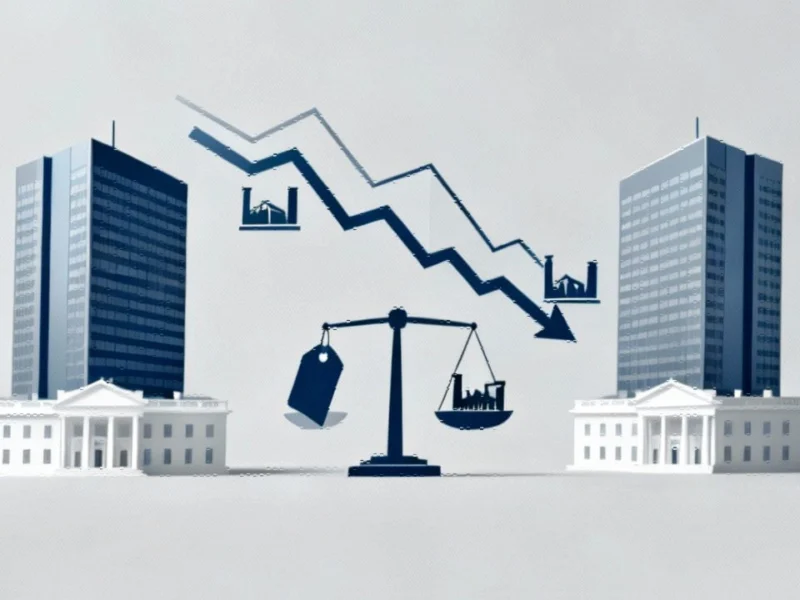The Growing Insider Threat Epidemic
While organizations have traditionally focused their cybersecurity efforts on external threats, a more insidious danger has been quietly growing from within. Insider threats, stemming from both unintentional employee errors and malicious actions, have emerged as one of the most complex and damaging cybersecurity challenges facing modern enterprises. What makes these threats particularly dangerous is their ability to bypass traditional security measures while operating under the guise of legitimate access., according to industry analysis
Table of Contents
- The Growing Insider Threat Epidemic
- The Spectrum of Insider Risk
- Why Traditional Defenses Fail Against Insider Threats
- The Human Factor: Psychology and Context
- The AI Paradox: Both Problem and Solution
- Data at Risk: What Insiders Are Compromising
- Strategies for Effective Insider Threat Management
- Detection Strategies: Looking for Smoke, Not Fire
- Building a Comprehensive Defense Strategy
According to Fortinet’s 2025 Insider Risk Report, 77% of organizations experienced insider-related data loss in the past 18 months, with 21% reporting more than 20 incidents during that period. These statistics reveal that insider incidents are not isolated events but recurring problems that demand new approaches to security.
The Spectrum of Insider Risk
Insider threats manifest in various forms, ranging from simple human error to sophisticated malicious activities. The majority of incidents (62%) stem from human error or compromised accounts rather than intentional misconduct, highlighting that negligence remains a significant vulnerability., according to further reading
Chad Cragle, CISO at Deepwatch, categorizes insider threats into several profiles: “Some are accidental, like the ‘oops, I clicked it’ employee who mishandles data, unaware of the consequences. Others are intentional: the moonlighter using company resources for side work, the rule breaker who uses unapproved tools, or the person using a mouse jiggler to fake productivity.”
The most dangerous category includes disgruntled employees seeking revenge, opportunists chasing profits, sleeper agents embedded by outsiders, and malicious insiders motivated by greed or ideology. What unites these threats is their ability to operate from within the organization’s trusted perimeter., according to market trends
Why Traditional Defenses Fail Against Insider Threats
Conventional cybersecurity measures are designed to keep external attackers out, but they often operate on the assumption that internal access equates to trust. This fundamental flaw leaves organizations vulnerable to actions that fall within normal permissions but represent abnormal behavior patterns., according to according to reports
Matthieu Chan Tsin, Senior VP of Resiliency Services at Cowbell, identifies three critical factors that make insider threats particularly dangerous:, according to market analysis
- Access to Sensitive Systems: Insiders have legitimate access to networks and data, meaning they don’t need to bypass external security measures
- Evasion of Traditional Defenses: Most cybersecurity focuses on external threats, leaving organizations vulnerable to attacks from within
- Knowledge of Internal Vulnerabilities: Insiders understand organizational processes, data, and security weaknesses
The Human Factor: Psychology and Context
Understanding the human element is crucial to addressing insider threats effectively. Dr. Margaret Cunningham, Vice President of Security & AI Strategy at Darktrace, explains: “The modern insider threat landscape is shaped by a convergence of global pressures — economic instability, workforce reductions, and accelerated AI adoption. These forces are placing heightened emotional, financial, and ethical strain on employees.”, according to recent studies
Human behavior is contextual, emotional, and adaptive. Stress, disengagement, or pressure to meet deadlines can push employees to cut corners, use unauthorized tools, or take shortcuts that put data at risk. These actions don’t always stem from malicious intent, making detection even more challenging.
The AI Paradox: Both Problem and Solution
Artificial intelligence presents a dual challenge in the insider threat landscape. On one hand, AI enables new forms of threats, including what Dr. Cunningham describes as “synthetic insiders — AI-powered impersonations that exploit human trust with startling realism.” AI-generated voices, deepfake videos, and synthetic personas can convincingly impersonate trusted employees.
Conversely, AI represents one of the most powerful tools for defending against insider threats. “By continuously learning the ‘patterns of life’, AI can surface subtle deviations that humans and static controls would miss,” notes Dr. Cunningham. However, she emphasizes that “insider detection with AI must be ethical, transparent, and proportional. Monitoring should focus on metadata and behavioral patterns rather than invasive inspection.”
Data at Risk: What Insiders Are Compromising
The types of data most frequently compromised in insider incidents reveal the breadth of organizational vulnerability:
- Customer records (53%)
- Personally identifiable information (47%)
- Business-sensitive plans (40%)
- User credentials (36%)
- Intellectual property (29%)
This data loss occurs through various channels, including email, personal cloud storage, unsanctioned SaaS applications, and increasingly through unauthorized use of generative AI tools.
Strategies for Effective Insider Threat Management
Addressing insider threats requires a multi-layered approach that combines technological solutions, policy enforcement, and cultural awareness.
Darren Guccione, CEO and Co-Founder of Keeper Security, advocates for zero-trust architecture: “Organizations large and small should implement a zero-trust architecture with least-privilege access to ensure employees only have access to what they need to do their jobs. This includes giving access to only what employees need to do their jobs, not granting access indefinitely, periodically checking who has access and monitoring activity.”
Jason Soroko, Senior Fellow at Sectigo, highlights the growing complexity: “The rising cost of recovery after an insider attack is driven by the complexity of IT environments, the adoption of new technologies like IoT and AI, and inadequate security measures such as systems using weak authentication.”
Detection Strategies: Looking for Smoke, Not Fire
Effective insider threat detection requires a nuanced approach. As Chad Cragle explains: “When it comes to detecting malicious or unintentional insiders, you don’t look for a single smoking gun — you look for the smoke. It might be unusual file transfers at odd hours, a contractor probing systems outside their scope, or small anomalies that, when repeated over time, form a concerning pattern.”
The challenge lies in finding the right balance between security and privacy, maintaining vigilance without creating a surveillance state that damages employee trust and morale., as our earlier report
Building a Comprehensive Defense Strategy
Organizations must integrate multiple approaches to effectively manage insider risk:
- Behavioral Monitoring: Implement AI-driven systems that learn normal behavior patterns and flag anomalies
- Access Control: Enforce strict least-privilege access and regular access reviews
- Employee Education: Train staff on proper data handling and the risks of using unsanctioned tools
- Technical Controls: Deploy data loss prevention systems and monitor data movement
- Cultural Initiatives: Foster an environment where security is everyone’s responsibility
As organizations continue to navigate hybrid work models, economic pressures, and rapid technological change, the insider threat landscape will only grow more complex. The organizations that succeed in managing these risks will be those that recognize the human, technological, and organizational dimensions of the challenge and develop comprehensive, adaptive strategies to address them.
Related Articles You May Find Interesting
- Tesla Q3 2025 Vehicle Deliveries Hit Record High But Profits Lag Amid Rising Cos
- Xbox Teases Premium Hybrid Console as Development Costs Rise
- The Silent Threat Within: Why Insider Risks Are Evolving Faster Than Defenses
- NASA Advances Artemis II Moon Mission Despite Federal Shutdown, Installing Orion
- Arkade Protocol Emerges as Bitcoin’s Next-Gen Payment Solution
References & Further Reading
This article draws from multiple authoritative sources. For more information, please consult:
- https://www.fortinet.com/resources/reports/insider-risk-report?utm_source=Blog&utm_medium=Fortinet-led&utm_campaign=AI-DrivenSecOps-GLOBAL-Global&utm_content=EB-insider-risk-report-G&utm_term=SOC&lsci=701Hr000002RzK4IAK&UID=ftnt-6692-552929
- https://darktrace.com/
- https://www.deepwatch.com/
- https://cowbell.insure/
- https://www.keepersecurity.com/
- https://www.sectigo.com/
This article aggregates information from publicly available sources. All trademarks and copyrights belong to their respective owners.
Note: Featured image is for illustrative purposes only and does not represent any specific product, service, or entity mentioned in this article.




3jr4iv